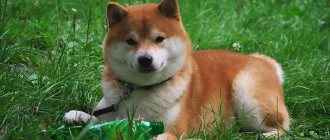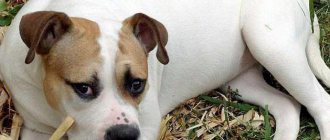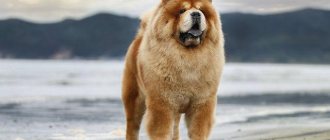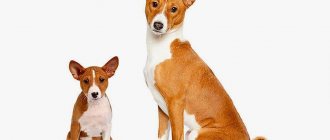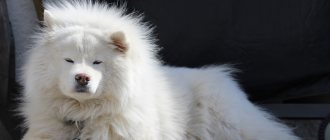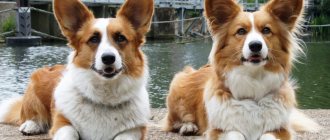Each owner chooses a dog to match himself; it is not without reason that they are somewhat similar to each other. In the world, according to the International Canine Association, there are approximately 4 hundred different breeds. Some prefer a large or miniature dog, others prefer a fluffy or, conversely, bald dog, and still others prefer a hunting dog or a very domestic one. And all the owners have one thing in common - boundless love for our little brothers. A considerable percentage of people choose small, smart pets, and one of them may be the Pekingese. How much does a Pekingese puppy cost in Russia, and what features does this beautiful creature have, we will tell you further.
History of the origin of the breed
Several years ago, American dog handlers became concerned about the origins of the Pekingese. They took DNA from the dogs, examined it and came to interesting conclusions. The animal has common roots with the wolf. The owners of the breed did not like the relationship; they liked the beautiful legend about the origin of the little pets much more.
Legend No. 1
Many, many years ago, a formidable and beautiful lion fell in love with a monkey. Agile and pretty, dressed in a white fur coat, she impressed the king of beasts. The situation in animal society was not conducive to the unification of loving hearts. The lion is the king of the fauna, the monkey is comparable to a simple peasant woman, what kind of union can we talk about?
Then the lion rejected his great height, crown and throne in order to unite with his beloved. From such an unusual union, a Pekingese dog was born, which inherited luxurious fur from its father, and facial expression and color from its mother.
Legend No. 2
The second story, concerning the origin of the Pekingese, is filled with sad events. The Royal Pekingese has been known for more than 2000 years, its homeland is China, and Empress Tsu-Khi had a hand in breeding representatives of the breed, who wrote its first standard in the 19th century. Until the middle of the declared century, nothing was known about the Pekingese dog breed outside of China. The year 1860 came, England and France defeated Beijing, the emperor with his family and servants were forced to flee. Only his elderly aunt remained in the summer palace, who considered it beneath her dignity to run away from enemies. Along with the woman there were five Pekingese dogs, two males and three females.
The further story has two branches. According to some sources, the invaders who broke into the palace found the aunt dead; she took her own life, but did not have time to kill the dogs. The second version tells that the elderly woman was unable to commit suicide. Her further fate is unknown, and the royal Pekingese ended up in the hands of marauders. The animals were taken to England, these dogs became the founders of the breed.
36 years later, in 1896, two more dogs were brought to the UK. According to one version, animals took an active part in the formation of the modern type of breed. However, comparing photos of the old-type Pekingese and the current one, this hypothesis raises serious doubts.
At the end of the 19th century, the Royal Pekingese ended up in the USA, where the dog was appreciated. Breeding work began, in which the Japanese Chin was involved. To this day, all breeders in the world focus on English Pekingese, trying to get a show animal.
Breed in Russia
According to official data, the Pekingese breed appeared in Russia in the 50s of the 20th century. However, there is a hypothesis that the miniature dog was popular among the highest nobility under Nicholas II. His daughter Anastasia was given an animal named Jemmy. According to unverified information, Jemmy was shot along with his owner.
Interesting fact! To this day, only rich people keep Pekingese in China. The tax on a representative of this breed is very high.
Varieties and description of the Pekingese breed
Types of Pekingese are divided into:
- Pekingese;
- standard or royal Pekingese;
- The sleeve Pekingese stands out in particular.
The first category includes old-type dogs, which are very different from modern representatives of the breed. About 100 years ago, more graceful Pekingese were bred, taller than today, with a long body. Today, old-type dogs are extremely rare, they do not meet the standard, and participation in exhibitions and breeding is prohibited.
The smallest Pekingese is called the Sleeve. According to a beautiful legend, representatives of the Chinese imperial family carried tiny dogs in their sleeves. The sleeves of clothes were wide, the wind often blew in the palaces, and small dogs served as living protection from the cold.
Modern sleeve dogs are rarely born, because females do not take part in breeding. They are too small, natural birth ends in death, veterinary intervention can end the same way. It is enough to exceed the dose of sleeping pills in order to put the animal to sleep during a cesarean section, and the pet will never wake up.
Sleeve males are bred to standard females; the probability of giving birth to a tiny Pekingese is very low. These dogs cost incredible amounts of money and differ in size from the royal representative of the breed.
The weight of sleeve Pekingese does not exceed 3 kg , in all other respects they are the same as standard dogs.
Royal Pekingese standard
The description of the Royal Pekingese, according to the FCI standard from 2009, looks like this:
- General appearance: a small dog with an intelligent expression of the muzzle, stocky. A strong sense of self-esteem and superiority is expressed.
- Head: large, wide. The skull is voluminous, flat between the ears and wide.
- The muzzle is short, wide, and clearly visible.
- The eyes are round, medium in size, dark in color.
- The nose is short and wide, the nostrils are large and open. A light fold stretches from the cheekbones to the bridge of the nose, representing an inverted “V”.
- The lips are dense and should not hide a pronounced chin. The teeth and tongue are not visible behind the lips.
- The ears are heart-shaped, located at the level of the top line of the skull, reaching the bottom line of the muzzle, but not descending beyond it. Fit tightly to the head.
- The neck is thick and short.
- The body is short, the waist is clearly defined.
- The chest is wide, the ribs are well sprung.
- The front legs are wide and flat, sometimes turned slightly outward.
- The hind legs are strong and well developed.
- The tail is set high and is often carried over the back or side.
Size and weight
According to the breed standard, the ideal weight of the Royal Pekingese is 5.5 kg .
- The minimum weight for a male dog is 5.3 kg, the maximum is 6 kg.
- The minimum weight of a female is 4.8 kg, the maximum is 5.7 kg.
- The height of the male is 19-23 cm.
- Bitch height from 18 to 21 cm.
Color and coat type
The Pekingese coat description is as follows:
Long, straight. A collar is formed around the neck, which should not extend beyond the shoulder blades. The undercoat of dogs is dense and soft, the outer coat appears rough. There are feathers on the ears, hind legs and tail. The fur should not interfere with the movement of the animal; its excessive length is considered a defect.
The Imperial Pekingese comes in numerous colors. The most common are red and fawn representatives of the breed.
The main colors are presented in the list:
- Red is divided into several options: light red, golden, red. Having a dog of red color, for example, the owner will receive a pedigree for it, in the color column it is indicated “red”. You need to know that the color subtype is not specified in the pedigree, only red.
- Today, dogs with a gray color are becoming popular. They look great. Gray color can vary from fawn to dark silver.
- Pekingese dogs are very beautiful and have a milky color.
- There are representatives of the breed that are black and white.
- Paticolor is a fairly common occurrence among Pekingese. The dog is painted white and red.
- Black and tan color is very rare. Its carriers are short-haired Pekingese; such dogs are born extremely rarely in the kennel.
- The Black Pekingese is another rare representative of the breed. Often puppies are born with white markings on the forehead and paws, this is not a defect.
- If a buyer is offered a white Pekingese with blue eyes, he should run away from such a breeder. They want to sell an albino to a naive person, passing him off as a purebred dog. Albinos are considered a breeding match, a true white Pekingese has dark eyes, black eyeliner around them and a pigmented nose.
IMPORTANT! If a breeder heavily praises a small puppy, passing it off as a dwarf Pekingese, you should run away. The buyer is faced with a typical breeder, because breeders know that the name “dwarf” is not used in relation to the breed.
Types of purchases and how much they cost
There are three classes of Pekingese dogs:
- Breeding class (for breeding).
- Pet class (for keeping as a pet).
- Show class (for participation in exhibitions).
Show class animals are the most expensive, pet class animals are the cheapest.
Depending on the age, you can buy a puppy:
- 1-1.5 months.
- two months old
- 4 month old.
- six month old.
Most often, two-month-old animals are purchased. Here we must take into account that the characteristics of the breed breed and show classes are fully formed only by the age of six months.
Depending on the place of purchase:
- From a professional breeder.
- According to an ad on the Internet submitted by ordinary people (Pekingese owners).
- In the nursery.
- At the pet market.
- At the shelter.
The most expensive dogs are from breeders, and the cheapest ones are at a pet market or through advertisements from ordinary people. In shelters you can adopt an animal that finds itself without an owner for free.
Health and illness
When purchasing a representative of the breed, you should be prepared for regular visits to the veterinarian, because the dogs are quite painful. Those dreaming of a puppy are presented with a list of possible diseases:
- Cataracts, in which the lens of the eye changes. The changes lead to clouding of the eye or blindness.
- Distichiasis or abnormal eyelash growth.
- Turning of the eyelid outward.
- Turning of the eyelid inward.
- Dermatitis of the muzzle that occurs in its folds.
- Hemolytic anemia or destruction of red blood cells.
- Hypoplasia of the tooth. With this disease, there is no development of part of the second vertebra, which leads to its mobility.
- Hypothyroidism is an endocrine disease leading to the destruction of the thyroid gland.
- Disease of the intervertebral discs, they become prone to ruptures and displacements.
- Inguinal hernia.
- Keratitis, characterized by a lack of tears in one or both eyes.
- Atresia of the tear streams, in which they are too small or not formed at all.
- Displacement of the lens, characterized by its incorrect position.
- Microphthalmia. With this condition, one or both eyes are too small.
- Pannus is the growth of tissue above the cornea of the eyes.
- Inflammation of the cornea in which the pigmentation is abnormal is called pigmentary keratitis.
- Retinal atrophy.
- Skull too short.
- Ulcerative keratitis, accompanied by the formation of ulcers on the cornea.
- Thrombocytopenia, in which the platelet count in the blood is low. This leads to hemorrhages in the mucous membranes.
Lifespan
When thinking about purchasing a puppy, the potential owner wonders how long do Pekingese live? The lifespan of a representative of the breed varies from 12 to 15 years .
IMPORTANT! The imperial dog is quite sickly. Treatment is very expensive and not always effective.
Character and intelligence
When purchasing a charming baby, it is worth remembering its original purpose and luxurious life in the palaces of the Chinese imperial family. The little dogs had personal chefs, hairdressers and teachers; to date, representatives of the breed have retained their royal dignity.
The kids are smart, devoted to their owner and somewhat stubborn. To win the favor of a Pekingese, whose characteristics tell of his excessive sense of his own superiority, you will have to make an effort. Effort does not mean physical impact on the dog, but the owner’s immense patience. The Pekingese requires a respectful attitude towards its person; you can negotiate with the dog and explain it to it, but a representative of the breed will ignore orders.
Attitude towards children and others
A monkey dog is walking down the street, people are touched by the charming dog, children reach out to stroke it. The Pekingese looks kind and calm, but it categorically cannot tolerate a familiar attitude towards itself.
A little secret: a decent breeder will not sell his “graduate” to a family with children under six years of age. Kids try to express feelings towards the animal by lifting it by its front paws, sharply tugging on its fur, or trying to put a finger in its mouth. The puppy has not yet learned to resist; such treatment will make him physically and mentally disabled. An adult dog is patient with children, she is unlikely to bite a little bully, but being a nanny is beneath her dignity.
The dog is lenient towards strangers; if they try to pet the Pekingese and demonstrate their friendly attitude, he will accept the affection. At the same time, the dog will look truly royal; with his facial expression, the representative of the breed says “so be it, pet me.”
Prefers to be the only pet in the family and has a hard time getting along with burrowing dogs. The latter turn the Pekingese into a neurasthenic - hysterical.
IMPORTANT! The animal is not suitable for families with small children.
What does the price depend on?
The cost of Pekingese dogs varies at different sales points in Russia. The price is formed under the influence of the following factors:
- Age.
- Purebred.
- Color.
- Class.
- Availability of pedigree.
- Health status.
- Place of purchase.
- Availability of vaccinations and veterinary passport.
- Having titled parents.
The older the puppy is, the cheaper it will cost. Professional breeders and nurseries sell Pekingese at a higher price than at the pet market.
Training and education
A dog, regardless of its breed and size, must know basic commands. The imperial dog is no exception to the rule; you can train your baby at home.
It all starts with adopting a nickname. Keeping in mind the stubbornness of the small Pekingese dog, education and training is based on positive reinforcements. The dog has completed the task - it is rewarded with something tasty and praised.
Pekingese nurseries
| Nurseries | Federation | City |
| Kennel Beijing Palace Dog | RFSS | Dalnerechensk |
| Nursery Vartavo | RFLS | Nizhnevartovsk |
| Kennel GROM IS SOUL | RFLS | Ivanovo |
| Nursery GOLDEN CROCUS | RFLS | Kaliningrad |
| Nursery From Jasmine Palace | RFLS | Pavlovsky Posad |
| Nursery Iz Minicheva Posad | OANKOO/Elite | Saint Petersburg |
| Nursery from the United Kingdom | RFLS | Noginsk |
| Nursery from the Temple of Demera | RFSS | Moscow |
| Nursery MIREI RADIANCE | RFSS | Ussuriysk |
| Nursery FROM NORTHERN DREAM | RFLS | Moscow |
| Nursery Ragsol | RFLS | Moscow |
| Nursery FROM PANDA ISLAND | RFLS | Saint Petersburg |
| Kennel SUNLAND LUCKY | RFLS | Volgograd |
| Kennel Sunrise Dragon / Sunrise Dragon | OANKOO/Fauna | Moscow |
| Kennel SAFFRON SHERHI | RFSS | Moscow |
| Nursery Starlit Floret | OANKOO/Elite | Sovetskaya Gavan |
| Kennel Stevestyle | RFSS | Kirov |
| Nursery HAPPY AMERICLE | RFLS | Elektrostal |
| Kennel FARSHITA PAR | RFSS | Moscow |
| Nursery SHAKTI | OANKOO/RKK | Vyborg |
| Kennel ExMaguay | OANKOO/Fauna | Irkutsk |
| Nursery Yuli*Ka | RFLS | Ekaterinburg |
Source - https://rkf.online/organizations?organization_type=3&active_rkf_user=false&activated=false
For more information, see the official website of the RKF.
Pros and cons of the breed
According to the characteristics of the breed, the Pekingese has a tiny body, but the heart of a lion. In first place among his positive qualities is his courage.
- There are several types of Pekingese, as described above. All of them are fearless, capable of rushing into battle, protecting the owner from a two-legged enemy or a large dog. Owners say that their pets have long forgotten about their own size.
- The Pekingese, who once lived in the palaces of the Chinese emperor, remembers his roots. Our ancestors had an amazing sense of self-esteem, and today's dogs have preserved and increased it. This means that the baby will begin to behave as if he is the owner. The animal will not run after the owner, begging for attention and affection, but will favorably accept the manifestation of his feelings towards himself.
- When walking, he prefers the company of his owner; escapes are a rare occurrence among Pekingese.
Disadvantages of the breed:
- Predisposition to numerous diseases.
- Cold attitude towards children and pets.
- Fancy in care and maintenance.
- High cost of a show class puppy.
How much does a Pekingese puppy cost in Russia?
There are 3 known classes into which Pekingese are divided. Accordingly, based on them, the cost of puppies also differs.
- Pat. This includes animals that do not participate in shows and exhibitions and are not used for breeding. But for any owner, a Pekingese puppy – regardless of its pedigree – is a great happiness and a real pleasure. These pets are loved not for their diplomas from exhibitions, nor for their pedigree. Such Pekingese cost 8-15 thousand rubles.
- Breed. This class includes puppies that act as producers of offspring. These pets must have the title of Russian champion to participate in the crossing of an expensive litter. Such Pekingese cost 15-30 thousand rubles.
- Show. This class is considered elite. These are the true champions. A show class puppy can only be purchased after 6 months. The sale should only be carried out by a specialist, after whose work it is determined whether there are any flaws or deviations in the exterior. A puppy of this class costs 30 thousand rubles. and more.
It is worth noting that the price of a Pekingese puppy is affected by age. The younger the dog, the higher the cost. This rule, among other things, does not apply to representatives of the show class.
Of course, this is the average price tag for the classes. Anyone can purchase a Pekingese at a price significantly lower than the specified price, if you turn to advertisements in the newspaper or on the Internet or from private owners. Meanwhile, no one can guarantee that this is a purebred dog, without diseases or other flaws.
Dog diet
Your pet needs a balanced and high-quality diet - natural food or dry food.
List of permitted products:
- Lean meat, boiled. Preferably veal or turkey, beef is too tough, chicken is an allergenic product.
- Occasionally they give rice and oatmeal; excessive consumption of carbohydrates will lead to weight problems.
- Vegetables, excluding potatoes and corn.
- Dairy products: low-fat cottage cheese and kefir, natural yogurt, homemade cheese are the favorite delicacies of the Pekingese breed, whose origins began with imperial dogs. They ate gourmet meals prepared by a personal chef. Current representatives of the breed have to be content with ordinary food.
- Once a week, a boiled quail egg is allowed.
- The menu must include a vitamin complex and fish oil.
Feeding natural food does not provide the animal with the vitamins that “drying” provides. Choose super-premium food for small breed dogs.
Care and maintenance
The animal does not tolerate heat well due to the structure of its muzzle. It is possible that breathing problems may occur, so the owner must provide the pet with a cool place where it can wait out the heat. Walks are carried out in the early morning or late evening, while the air temperature is comfortable for the dog.
The Pekingese has long hair, such a rich coat requires proper care.
Dog grooming
When getting a Pekingese, you should prepare for daily brushing of your pet. Particular attention is paid to the ears and groin area, where the hair often forms mats. Pets do not need a haircut; just trim the hair around the anus.
In order to avoid constant washing of the dog, in spring and autumn they walk with it in special clothes. A suit or overalls protects the lower part of the body from moisture and dirt; after a walk, the owner will only have to wash the pet’s paws.
As for bathing, it is carried out no more than once every two to three months. If the dog is very dirty, you cannot do without the procedure.
Ear and nail care
The ears of the imperial dog are examined daily; the auricle should be clean, pink in color, without the presence of inflammation or unpleasant odor. It is regularly wiped with a dry cotton swab.
Nails are trimmed once every three weeks with special nail clippers. You can perform the procedure yourself or contact a veterinary clinic for help.
Eye treatment and dental examination
The eyes are the most vulnerable part of the Pekingese's body. Owners need to protect their pet from eye injuries. The slightest bruise will cause the eyeballs to leak or dislocate.
If purulent discharge occurs, you should immediately contact a specialist. Any independent treatment of the visual organs will lead to tragic consequences.
The dog's teeth are brushed twice a week. If plaque, bleeding gums, redness or swelling are detected, immediately take your pet to a veterinarian. Another signal of impending dental disease is an unpleasant odor from the mouth.
How to choose a puppy
Those who want to buy puppies and have studied breed forums before purchasing one know what a Pekingese dog looks like. They buy babies only from specialized nurseries. Breeders who value their reputation will not sell a puppy younger than two months (before the first vaccination). When choosing a baby, pay attention to its appearance:
- The tummy is firm, but not bloated. His skin is pale pink.
- The nose is wide and open nostrils.
- The eyes are round in shape, there is no feeling that one is smaller than the other.
- The area around the anus is clean.
- The puppy looks cheerful, there is no lameness.
- The baby reaches out to the person, expressing a desire to get to know each other.
The cost of a baby depends on its level. Show-class puppies are more expensive than breed (brit) or pet. The latter are sold for castration or sterilization, which eliminates the possibility of puppies being born without documents.
The price of an exhibition specimen starts from 40,000 rubles , there is no upper limit. pet class dog will cost 10,000 – 15,000 rubles .
The Pekingese is a dog with a sense of self-esteem. Representatives of the breed are suitable for people who lead a measured lifestyle and have a certain income, because the dog’s illness implies expenses for its treatment.
Choosing a puppy
If you decide to purchase a purebred dog with a pedigree, you should contact a kennel or a breeder with a good reputation. At the time of purchase you must have:
- contracts;
- puppy passport;
- data on vaccinations performed.
A conscientious breeder will certainly inform you about who the puppy’s parents are.
From the presented litter, give preference to the friendliest and most active baby. He should have a healthy appearance, well-groomed fluffy coat, clear eyes, and a slightly plump belly. It is worth assessing the puppy's movements - there should be no lameness. It is necessary to pay attention to the level of opening of the nostrils and the level of depth of the stop. If the fold on the muzzle is too short, or if it is not flat enough, these are breed deviations.
